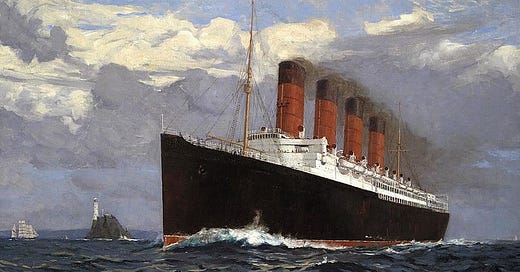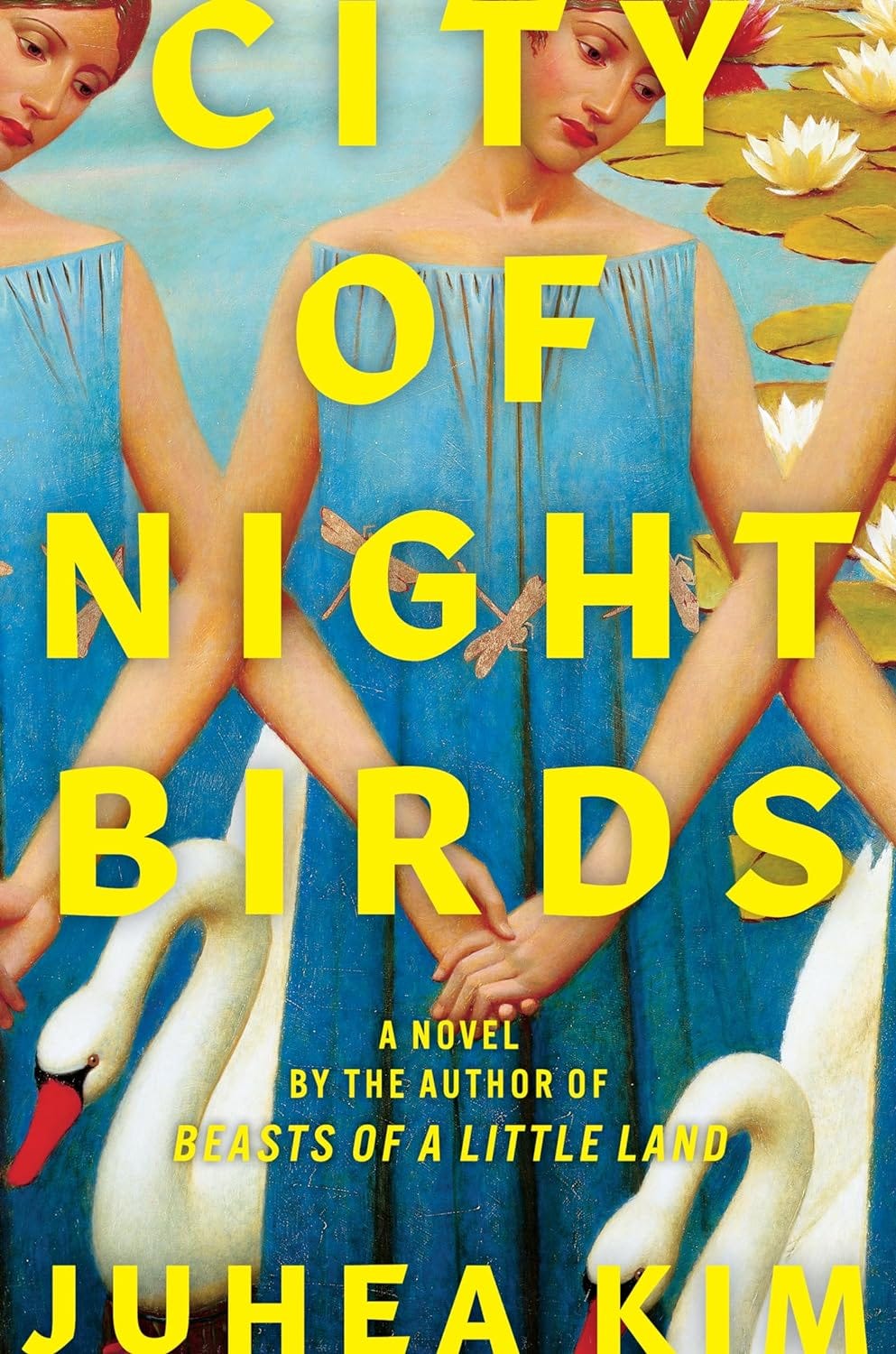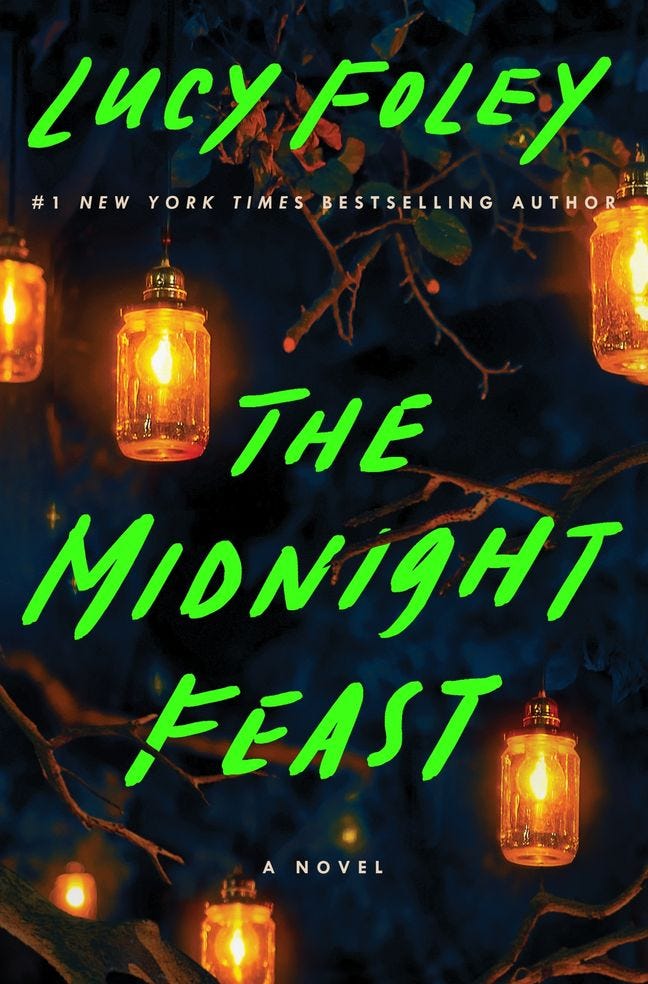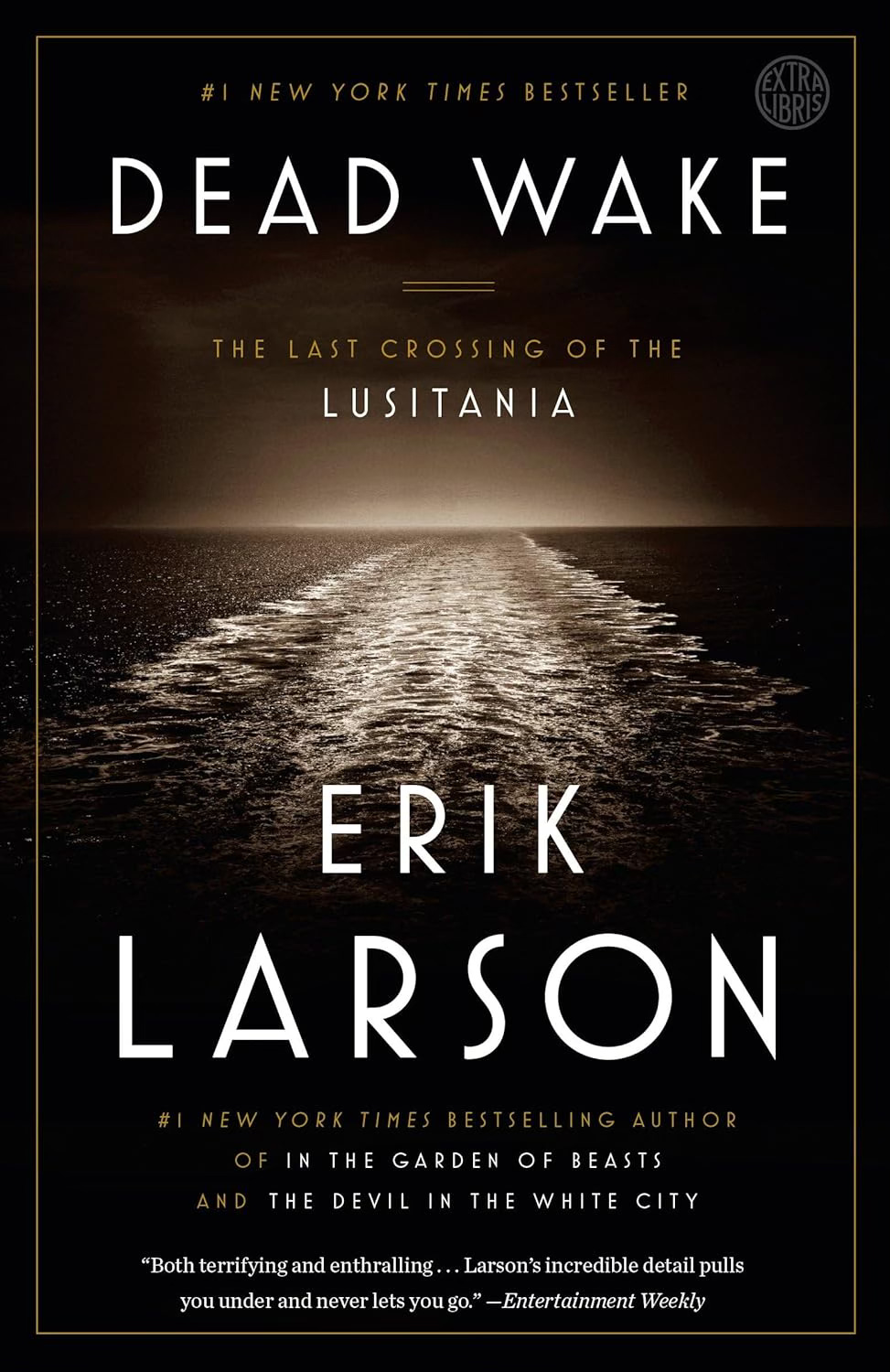Good morning!
This past week, I read three books that would be perfect to read on vacation (engaging but not too demanding on the reader): Juhea Kim’s City of Night Birds (a fiction book about a Russian prima ballerina), Lucy Foley’s The Midnight Feast (a murder mystery set on the Dorset coast), and Erik Larson’s Dead Wake (a narrative nonfiction book about the sinking of the HMS Lusitania).
Let’s get into it.
reads 📖→
City of Night Birds by Juhea Kim
City of Night Birds is a fiction book set in St. Petersburg, Moscow, and Paris. The novel opens with prima ballerina Natalia Leonova returning to Russia in 2019 after suffering a career-ending injury two years ago. Once the most famous ballerina in the world, Natalia now numbs herself with alcohol and Xanax. In St Petersburg, an old colleague gives her a chance to dance again in her signature role of Giselle. The novel alternates between flashbacks of Natalia’s childhood and journey to becoming a prima ballerina and the present as Natalia prepares to take the stage again.
Opinion: I used to love Reese Witherspoon’s book club. It introduced me to Lucy Foley’s escapist thrillers, Cheryl Strayed’s memoirs, and Taylor Jenkins Reid’s historical fiction. However, lately, the books have been pretty disappointing. I decided to read City of Night Birds after a friend recommended it. I was pleasantly surprised by this book. It is an engrossing read, and I enjoyed stepping into the world of Russian and Parisian ballet for a few hours. City of Night Birds is part Bildungsroman and part love story. Kim also touches on the Russo-Ukrainian war in the novel’s second half.
The bones of this novel were excellent; however, there is little character development other than Natalia. There are also a lot of narrative threads that are not entirely resolved. In particular, the ending disappointed me, and I wish the love story had been better developed (I didn’t really understand why they fell for one another).
I also felt mixed on the writing style. Kim writes descriptively about what the sky and water look like (“The sapphire-hued Black Sea lapping against a pebbly shore.”) and uses a lot of nature imagery (“Love that runs in Nina’s veins is as old as the first aspen.”). I personally don’t love this writing style unless it is incredibly well executed, like in Orbital, but I don’t think most readers would be put off by it.
Overall, I enjoyed reading City of Night Birds, but I wouldn’t jump to recommend it to someone.
Rating: 2.9/5
Genre: Contemporary Fiction
Notable prizes/book clubs/lists: Reese’s Book Club (December 2024)
Page count: 320 pages
Audio: 11 hours 45 minutes
Movie/TV pairings: Black Swan
The Midnight Feast by Lucy Foley
The Midnight Feast is a murder mystery set on the Dorset coast in England. Guests gather on the summer solstice for the opening weekend of The Manor, a luxury hotel reminiscent of Soho Farmhouse.
Foley alternates POVs between Francesca Meadows (the owner of the Manor who plans a “pagan chic” party), Owen Dacre (Francesca’s husband and The Manor’s architect), Bella Springfield (a hotel guest), Eddie (a local who washes dishes at the Manor), and DI Walker (the detective investigating the murder).
Opinion: I love Lucy Foley’s books, even if they are somewhat formulaic. She writes murder mysteries in the vein of Agatha Christie. Foley includes sharp social commentary and sets her stories in beautiful locations. The Midnight Feast was similar to her other books; it is a fun thriller with enough twists to keep me engaged. I’d recommend this book to someone who wants to read an escapist thriller.
Rating: 3.8/5
Genre: Contemporary Fiction; Thriller (Murder Mystery)
Notable prizes/book clubs/lists: NPR Best Books of the Year (2024)
Page count: 421 pages
Audio: 10 hours 20 minutes
Movie/TV pairings: Knives Out; Death on the Nile
Dead Wake: The Last Crossing of the Lusitania by Erik Larson
On May 7, 1915, a German submarine fired a torpedo at the RMS Lusitania, a British luxury passenger ship sailing from New York to Liverpool. The Lusitania sank in just 18 minutes. Nearly 1,200 people, including 128 Americans, died. Larson reconstructs the buildup and fallout from this disaster in Dead Wake.
Larson follows multiple narrative threads, including the personalities and experiences of the two captains—Captain Turner of the Lusitania and Walther Schwieger, the captain of the German U-boat that fired the torpedo. He traces the experiences of the ship’s interesting array of passengers, like Alfred Vanderbilt, art collector Hugh Lane (who carried paintings by Rembrandt and Monet on the ship), and Viscountess Rhondda (a suffragette bomb-maker). Larson also follows government officials, such as the officers working in British Admiralty’s Room 40, which intercepted and decoded German U-boat transmissions, and President Woodrow Wilson, who was grieving his wife.
Larson also highlights the randomness and happenstance of butterfly effects on both sides of this tragedy. The Lusitania’s captain, William Turner, believed it could outrun any threat, as it was one of the fastest civilian boats in operation. However, the ship was running on just three of its four engines and had to slow down due to some unexpected fog. It also faced at least two delays leaving New York. The British navy (aware of the escalating U-boat threat) failed to divert the Lusitania to a safer route. Once it sank, the navy ordered a British cruiser to turn back, delaying the rescue of the dying passengers in the frigid waters.
On the German side, Captain Schwieger had tried to fire on several other targets before the Lusitania. The U-Boat was also in that specific area off the coast of Ireland because Schwieger had decided to return home early before reaching his planned patrol area. Larson also touches on the hubris of the officers, general wartime aggression, and potential government conspiracy theories.
Opinion: The sinking of the Lusitania is often briefly mentioned in history textbooks as one of many reasons the U.S. entered World War I in 1917. I found Larson’s deep dive into this tragedy and WWI fascinating to read. Like in his other books, Larson reconstructs this historical period vividly and cinematically.
Larson draws on a wealth of historical research, including personal diaries, ship records, government documents, and legal cases filed after the disaster. There is an impressive amount of tiny details. For instance, Larson writes about how much Schwieger loved dogs. The German U-boat crew rescued a dachshund from the wreckage of another ship and, at one point, had six dogs on its submarine.
While impressive, Larson’s research sometimes hinders the overall narrative. He isn’t particularly selective about what he includes, and the extraneous details can be distracting. Larson devotes a considerable portion of Dead Wake to President Wilson’s experience grieving his late wife and subsequently courting a woman named Edith Galt. I’m sure Larson found a trove of primary sources on Wilson’s personal life, but this information served no purpose in Dead Wake and felt out of place. I’m also not sure I needed to know that Edith was the sister-in-law of a man who owned a jewelry store that was repairing Abraham Lincoln’s watch as the Civil War broke out.
Larson also touches on a lot of the unanswered questions regarding the Lusitania:
Why, given all the information possessed by the Admiralty about U-20; given the Admiralty’s past willingness to provide escorts to inbound ships or divert them away from trouble; given that the ship carried a vital cargo of rifle ammunition and artillery shells; given that Room 40’s intelligence prompted the obsessive tracking and protection of the HMS Orion; given that U-20 had sunk three vessels in the Lusitania’s path; given Cunard chairman Booth’s panicked Friday morning visit to the navy’s Queenstown office; given that the new and safer North Channel route was available; and given that passengers and crew alike had expected to be convoyed to Liverpool by the Royal Navy—the question remains, why was the ship left on its own, with a proven killer of men and ships dead ahead in its path?
He discusses some of the attempts by others to answer these questions but does not provide his own conjectures (likely because the possible answers quickly veer into conspiracy theory territory—Was the British government trying to force the U.S.’s hand into entering the war?).
Minor criticisms aside, Dead Wake is an impressive work of narrative nonfiction and an engaging read. I would definitely recommend this book, even if it is not necessarily one of Larson’s best works.
Rating: 3.8/5
Genre: Historical narrative nonfiction
Notable prizes/book clubs/lists: One of The Washington Post’s Best Books of the Year (2015)
Page count: 430 pages
Audio: 13 hours 4 minutes
thoughts 🎬🎧🗞️→
The lab-grown diamond debate:
Experts think that the prices for synthetic diamonds will continue to bottom out. One diamond pricer predicted: “I can see $10-15 a carat coming soon in lab diamonds’ future.”
The De Beers CEO recently slammed lab-grown diamonds, likening them to posters of priceless artworks.
But is a diamond really like the Mona Lisa? Diamonds aren’t really scarce. After the massive diamond mines were discovered in South Africa in the late 19th century, the British businessman controlling the mines launched a cartel (De Beers) to control the trade and set prices for the gemstones. The concept of the diamond engagement ring is also relatively recent; it was the product of a 1940s ad campaign.
A new Atlantis near the England-Wales border:
This Guardian article covers an eccentric and ambitious project (called Deep) funded by a single anonymous investor to “establish a ‘permanent human presence’ under the sea from 2027.”
Shrinking:
We’re finally watching season 2 of Shrinking in our house.
meals 🍳→
Night+Market pad see ew (here’s the recipe for pad Thai, which is somewhat similar) and chop suey eggplant.
Molly Baz’s crispy cottage cheese pancakes (our fam’s favorite pancake recipe).











